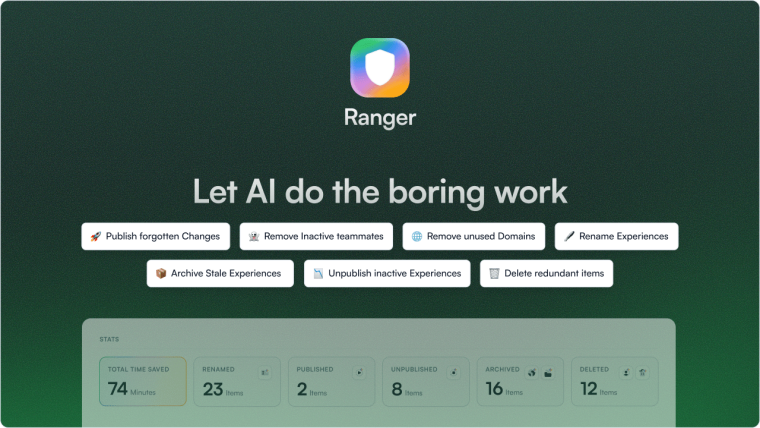Assume nothing. This could possibly be the most valuable piece of advice when it comes to customer experience management. And the most efficient way to avoid any assumptions and wild guesses is to reach out directly to your customers and ask for their opinion.
That’s what customer satisfaction (CSAT) surveys are all about – understanding the level of your customer satisfaction through meaningful feedback, provided in-context and in-product.
Here, chapter by chapter, we’ll guide you through the types of in-app surveys you can use, questions you should consider, examples you can learn from, and tips on how to build and run effective CSAT surveys for your product.
The overview of chapters:
1. What are CSAT Surveys and 4 Survey Types You Can Use
2. CSAT Survey Questions and When to Use Each Type
3. How to Create CSAT Surveys (and Top 5 Examples)
4. How to Measure Customer Satisfaction and Manage Feedback
The first chapter starts right here. Let’s dive in.
What are customer satisfaction surveys?
Customer satisfaction surveys are used to understand the level of customer satisfaction with your product, service, specific features, onboarding experience, or overall user experience throughout the product lifecycle.
They are an excellent way to assess customer needs, understand their expectations, and identify challenges they might come across while using your product.
CSAT surveys often use rating scales to track changes over time, so they can also be a significant tool for segmenting users by their CSAT score (we talk in detail about measuring the score and managing feedback in Chapter #4).
Why are CSAT surveys so important?
Knowing the level of customer satisfaction helps you understand the nuances of customer loyalty, predict adoption and retention rates more accurately, and drive revenue growth.
For example, a high CSAT score can be a sign of a potentially high rate of word-of-mouth referrals coming your way, which could mean more qualified leads and more closed deals down the line. On the other hand, a low score and negative feedback could signify the need for further UX improvements, product iterations, and new ideas for growth.
Whether you run a product-led, marketing-led, or sales-led company, a continuous collection of customer feedback is going to be your co-pilot on the path to your final destination – product success.
So, keep your eyes and ears open to customer feedback at all times. Being truly customer-centric and collecting feedback through CSAT surveys is one of the best ways to make well-informed, impactful product decisions, and make your customers feel heard and valued along their journey.

🎬 Webinar: The SaaS Guide to Customer Centricity
Join our panel of SaaS product experts for a discussion on how (and why) you can become more customer-centric.
4 types of customer satisfaction surveys you can use
Depending on your product strategy and metrics you want to track, there are several types of customer satisfaction surveys you can benefit from. Let’s take a look at each of them.
CSAT surveys
CSAT surveys, as we mentioned, are used for discovering how satisfied your users are with your product or service.
You can use this type of survey to literally ask customers “How satisfied are you with our product?” and offer a rating scale within the scope of “not satisfied at all” and “extremely satisfied” answers.

The timing of the CSAT survey is crucial. You should tie it with specific moments in the customer journey. It can be triggered after the onboarding, before renewal of the subscription, during the activation flow, after interaction with your customer success team, or after advanced feature integration.
How to create a CSAT survey that will engage users and bring you the most valuable feedback? We reached out to Riley Maguire, Product Marketing Manager at MonkeyLearn, for advice.
“Keep it simple: just ask for the ranking, and then ask ‘Why?’. This will ensure you get the best data, in the best format possible for you to analyze it. The critical piece is when you decide to play this card though, it needs to be done for the right audience and segmentation so that you can combine the Response + Context to inform your analysis.”
– Riley Maguire, Product Marketing Manager at MonkeyLearn
Running a CSAT survey is a great way to understand how to cultivate customer love. To better understand user sentiment, you can use follow-up questions to dig deeper and discover areas of improvement.
NPS surveys
Net Promoter Score (NPS) surveys are used for determining how likely a customer is to recommend your product to a colleague or a friend. This helps measure customer loyalty, identify different segments within your customer base, and indicate SaaS growth.
NPS results are shown on a scale of 0-10, grouped into Detractors (0-6), Passives (7-8), and Promoters (9-10). To calculate the NPS score, you’ll subtract the percentage of promoters from the percentage of detractors.

Keep the NPS best practices in mind, and try not to send this type of survey too early after a product subscription, or after a too good or a too bad experience that you’ve already identified, as it will directly affect the results.
CES surveys
Customer Effort Score (CES) surveys are used for measuring the level of effort a customer has to make to interact and succeed with your product. For example, you can use an emoji-based scale to offer options ranging from “very difficult” to “very easy”, and it could look like this:

You can also add a follow-up question to ask users to further explain their answers, but keep the survey simple and use no more than two questions.
To get the best results, trigger the CES survey right after a user completes a specific task or a milestone, during the activation flow, product installation phase, subscription upgrade, and other scenarios.
The results from a CES survey can be a good indicator of product adoption, user retention, and customer loyalty, especially when combined with NPS and CSAT surveys.
Flexible Microsurveys
Microsurveys are an excellent solution for getting contextual, in-product feedback.
Instead of offering a 15-question survey via email the minute your users enter the product for the first time, launch a microsurvey with a couple of short questions that will show at the right moment for the specific segment of your customer base.
You can use a survey tool like Chameleon to run custom CSAT, NPS, or CES Microsurveys, ask a single open-ended question to discover the reasoning behind your customers’ decisions, or put out an emoji-based Microsurvey to find out how your users feel about a new feature they just tried out.

On-Demand Webinar: How to Use Microsurveys
Equip your team with a modern approach to user feedback that powers product development ⚡






